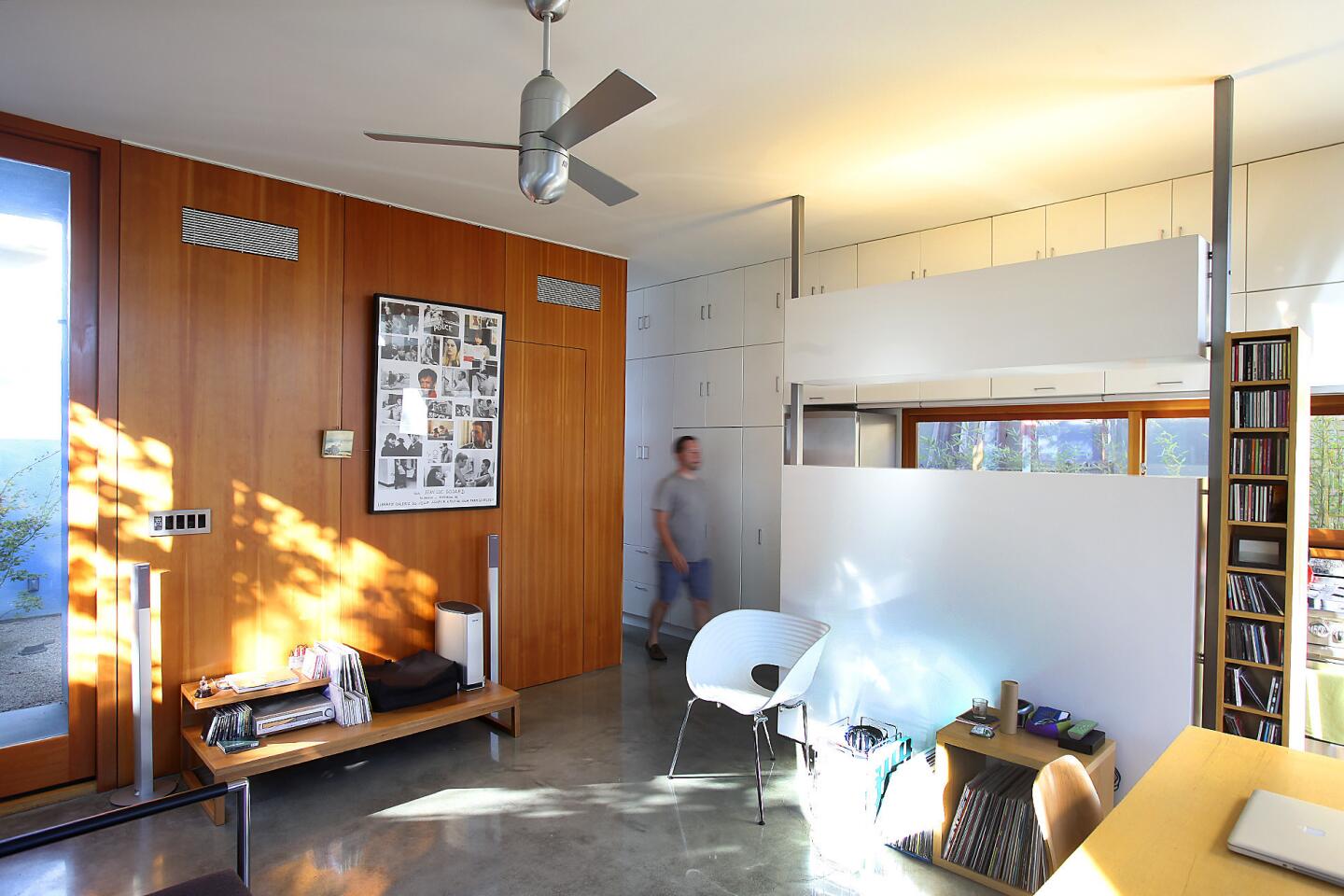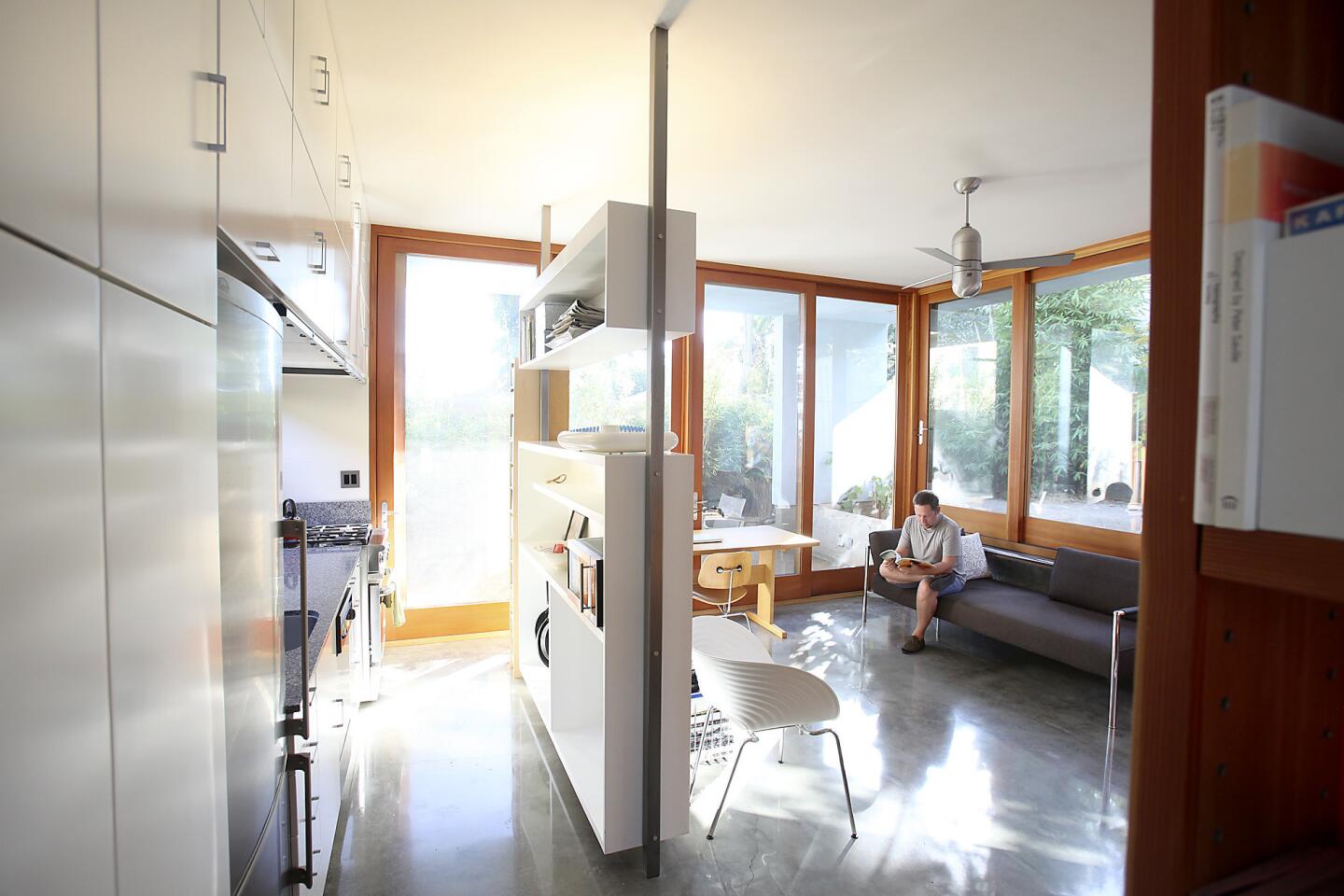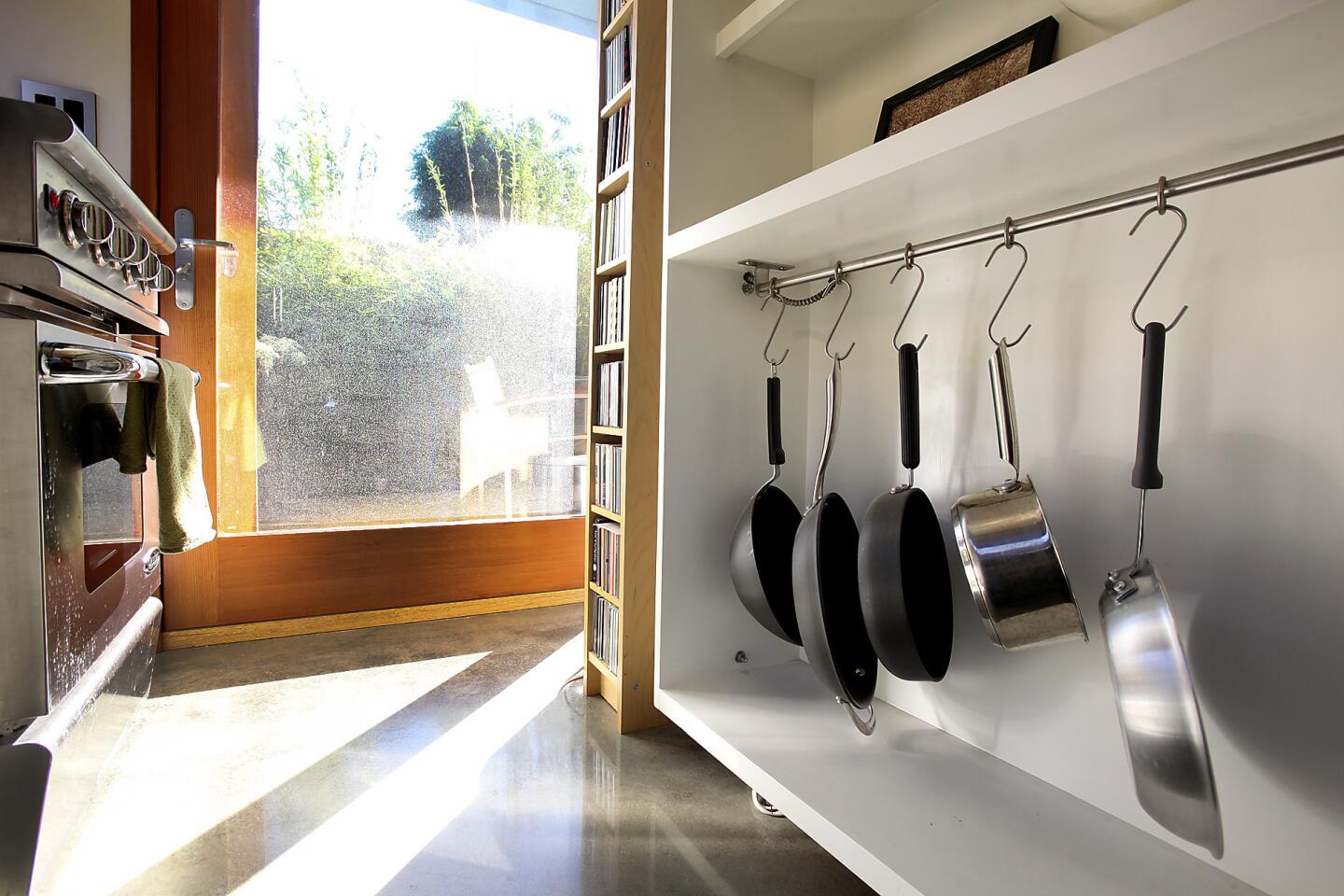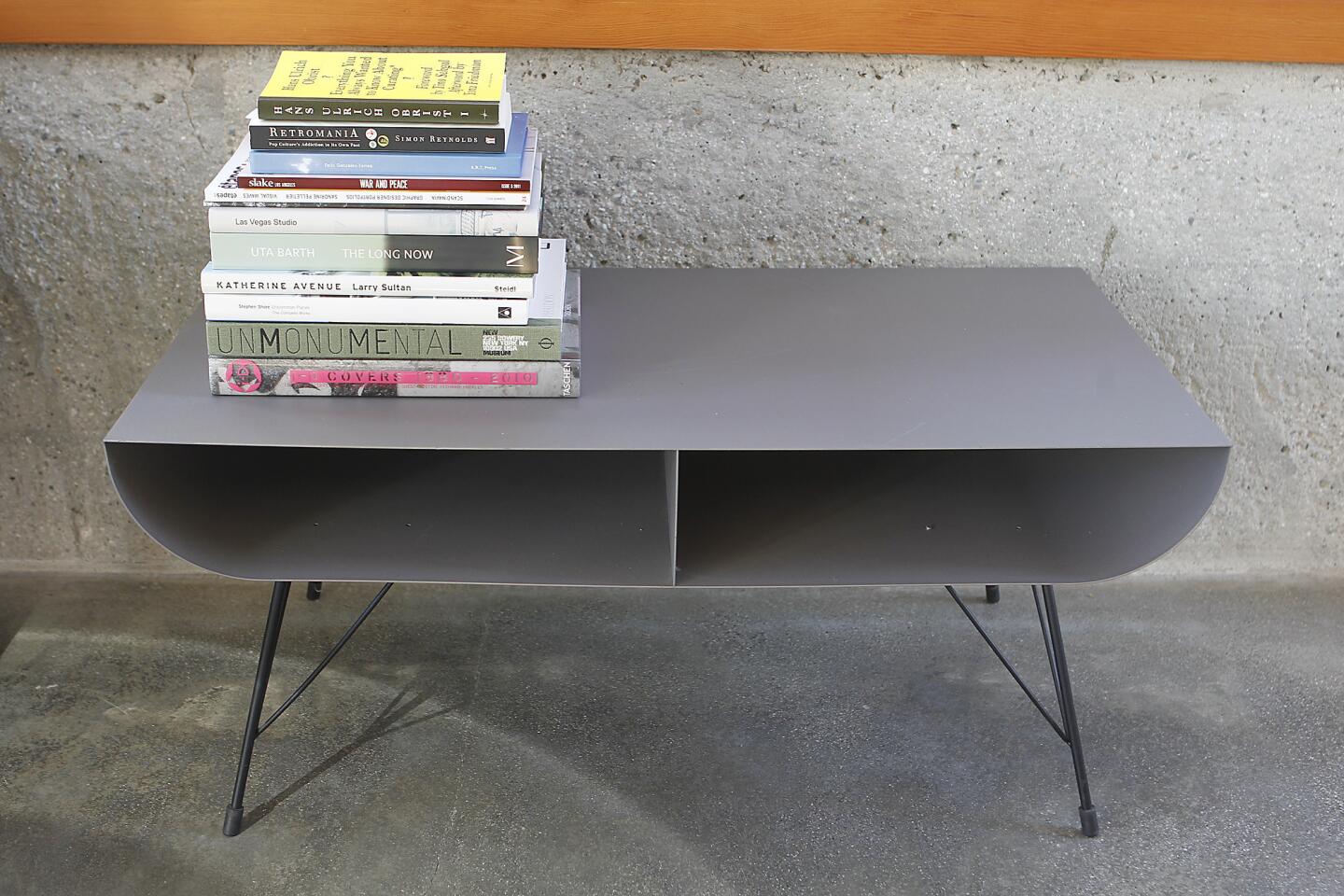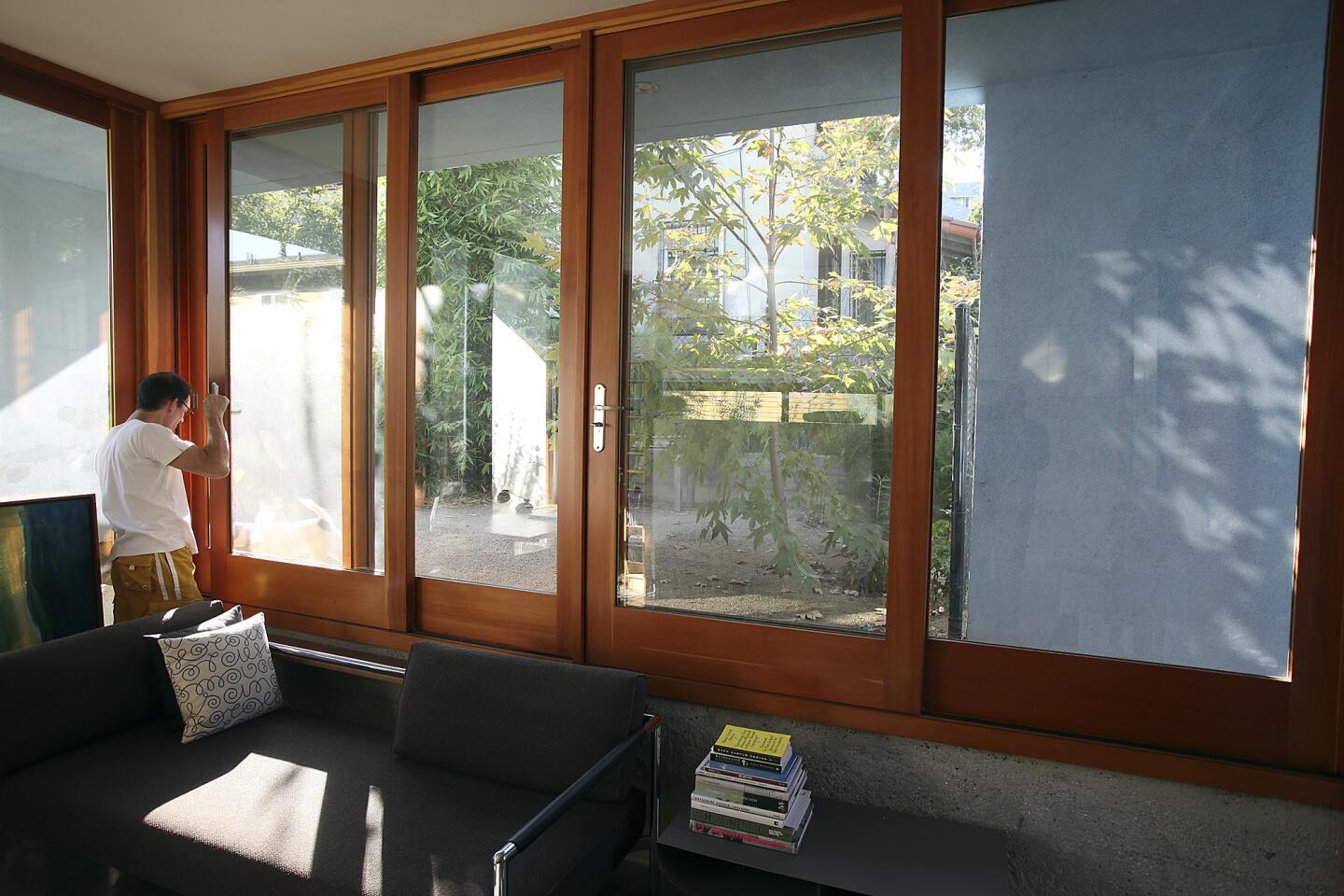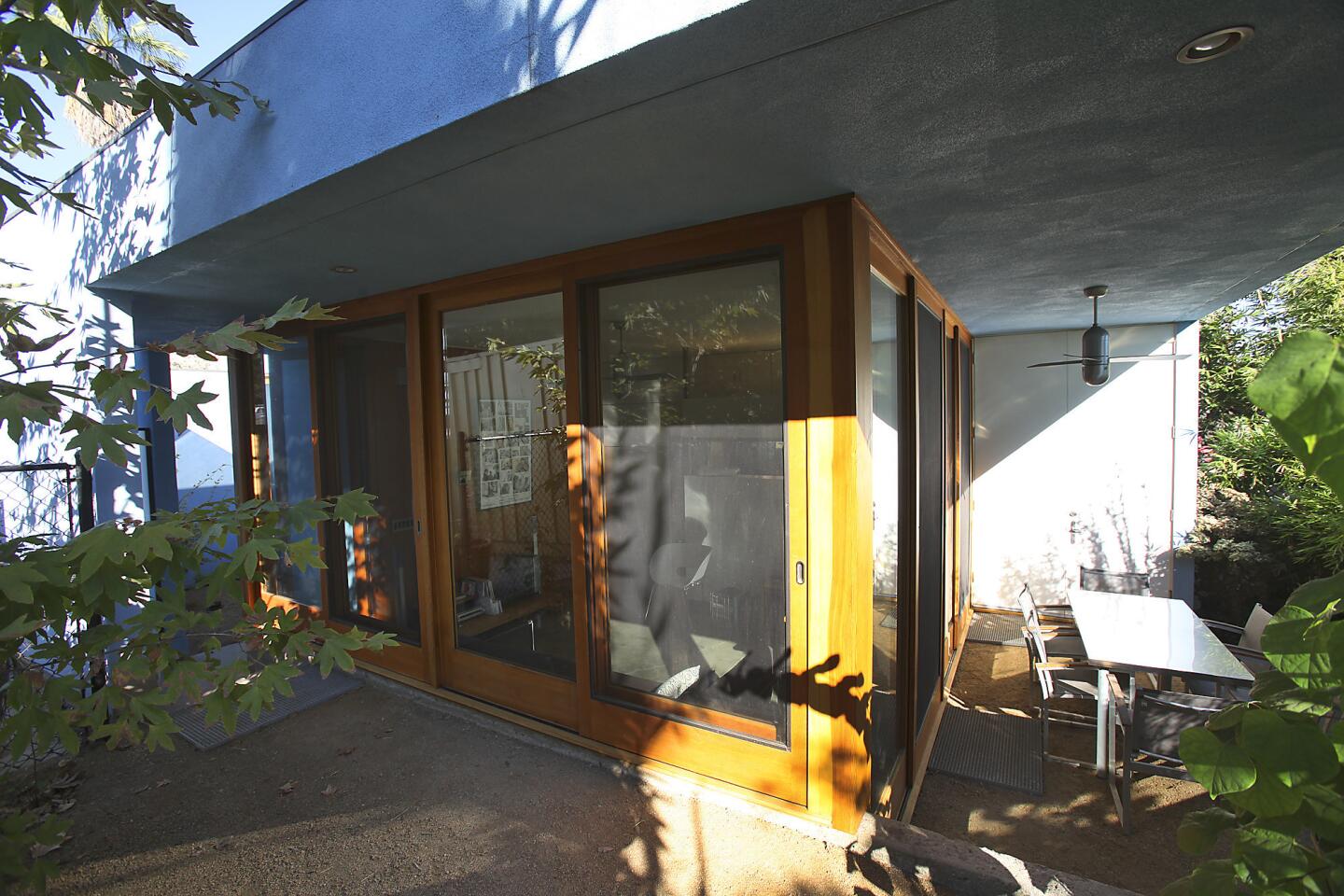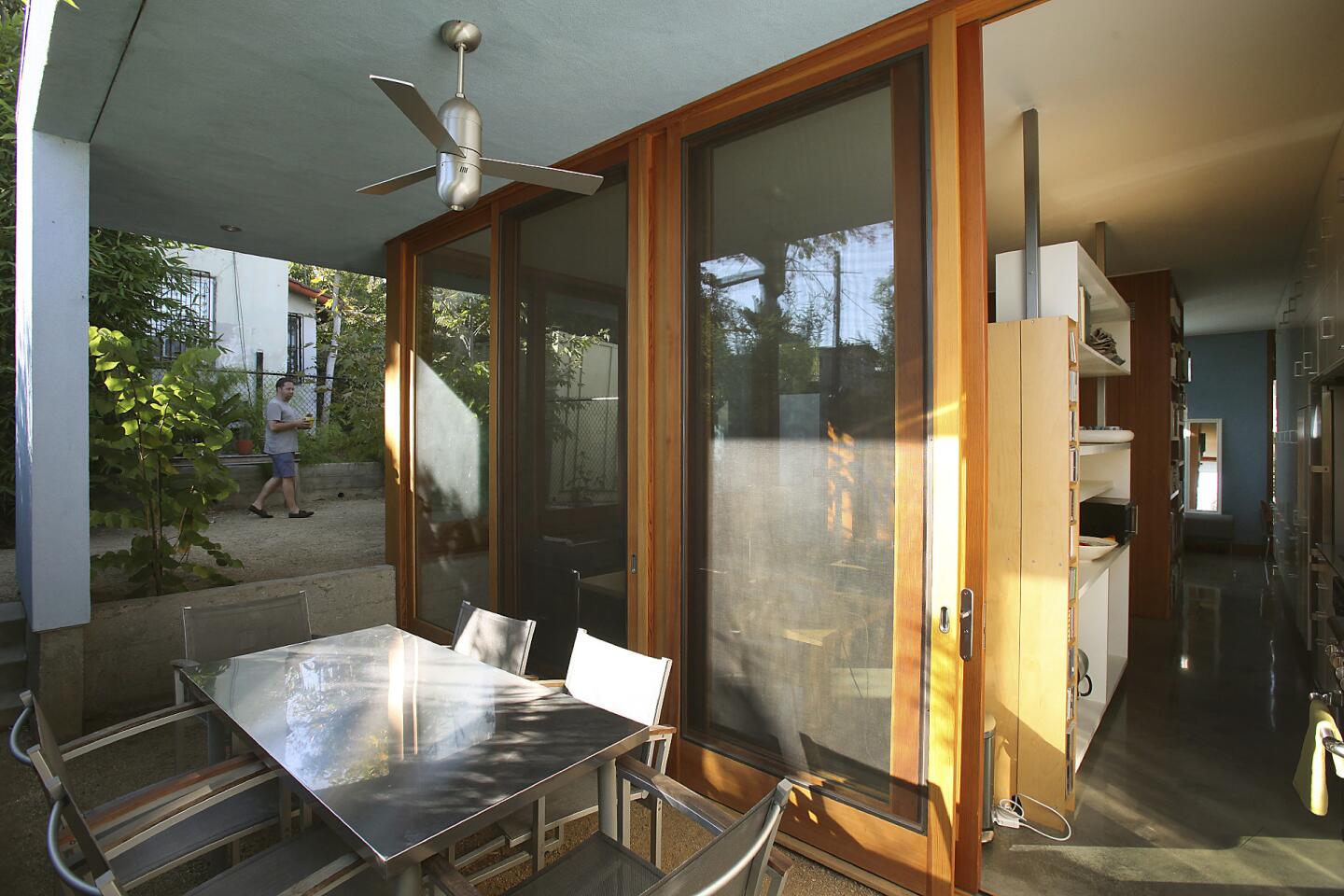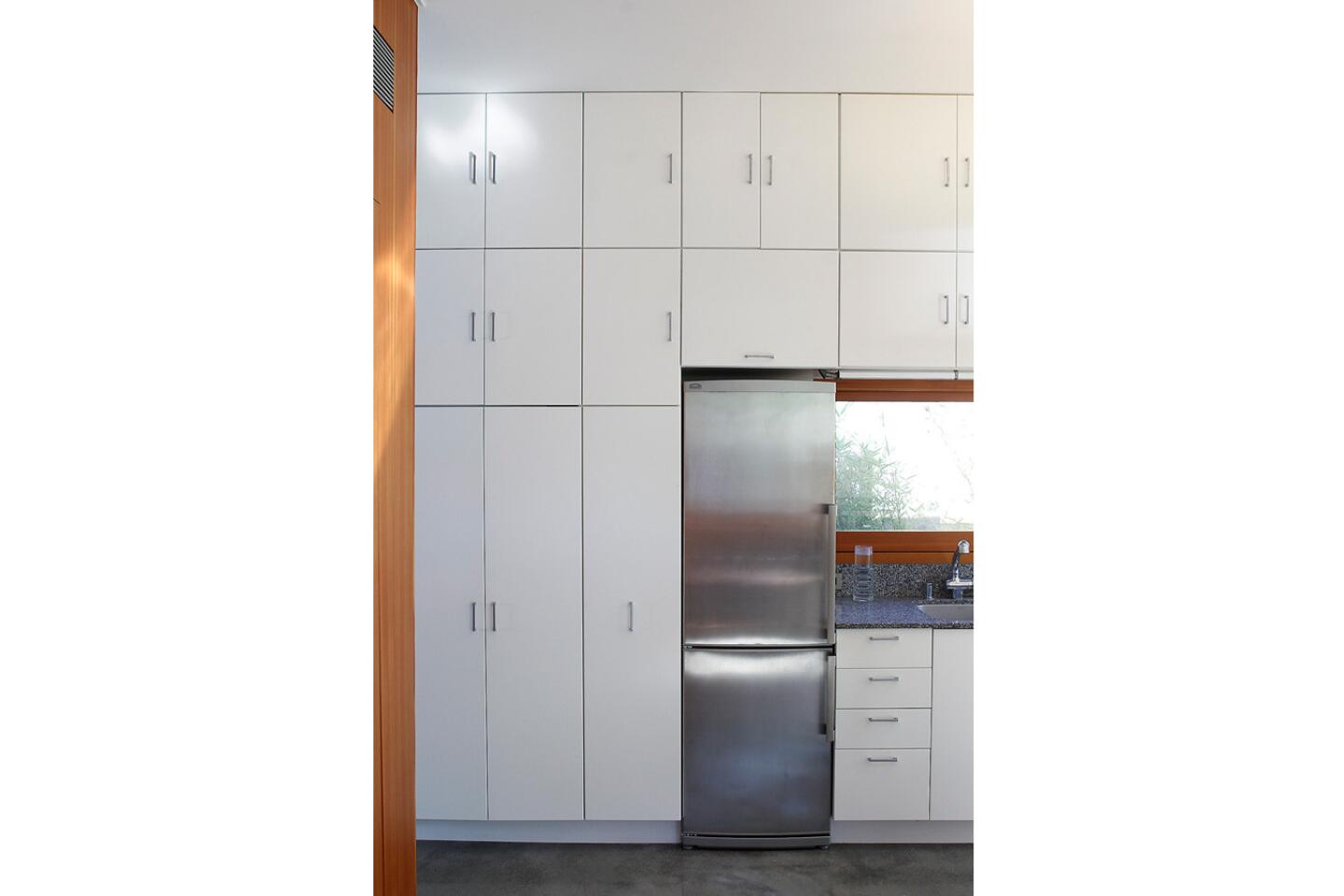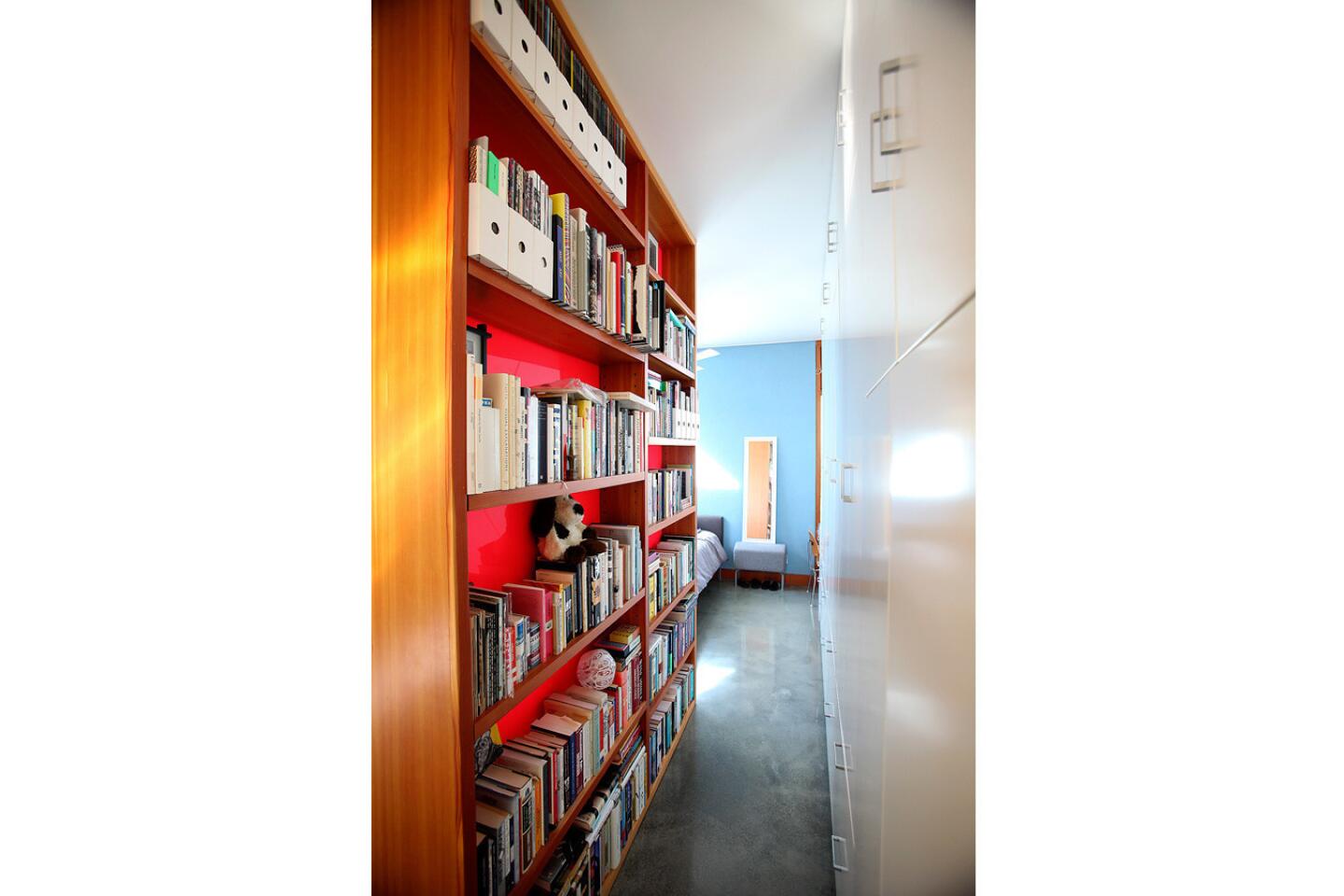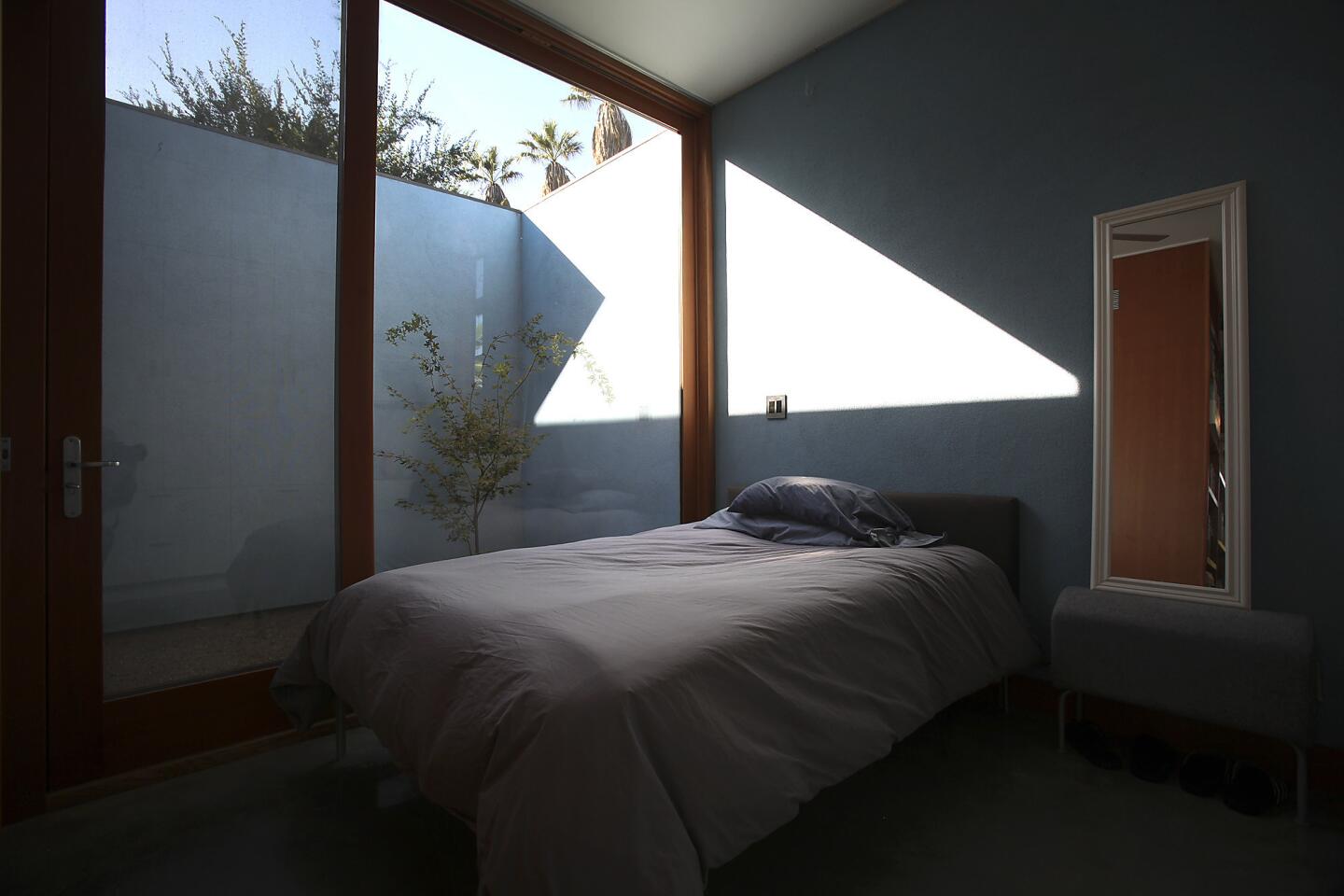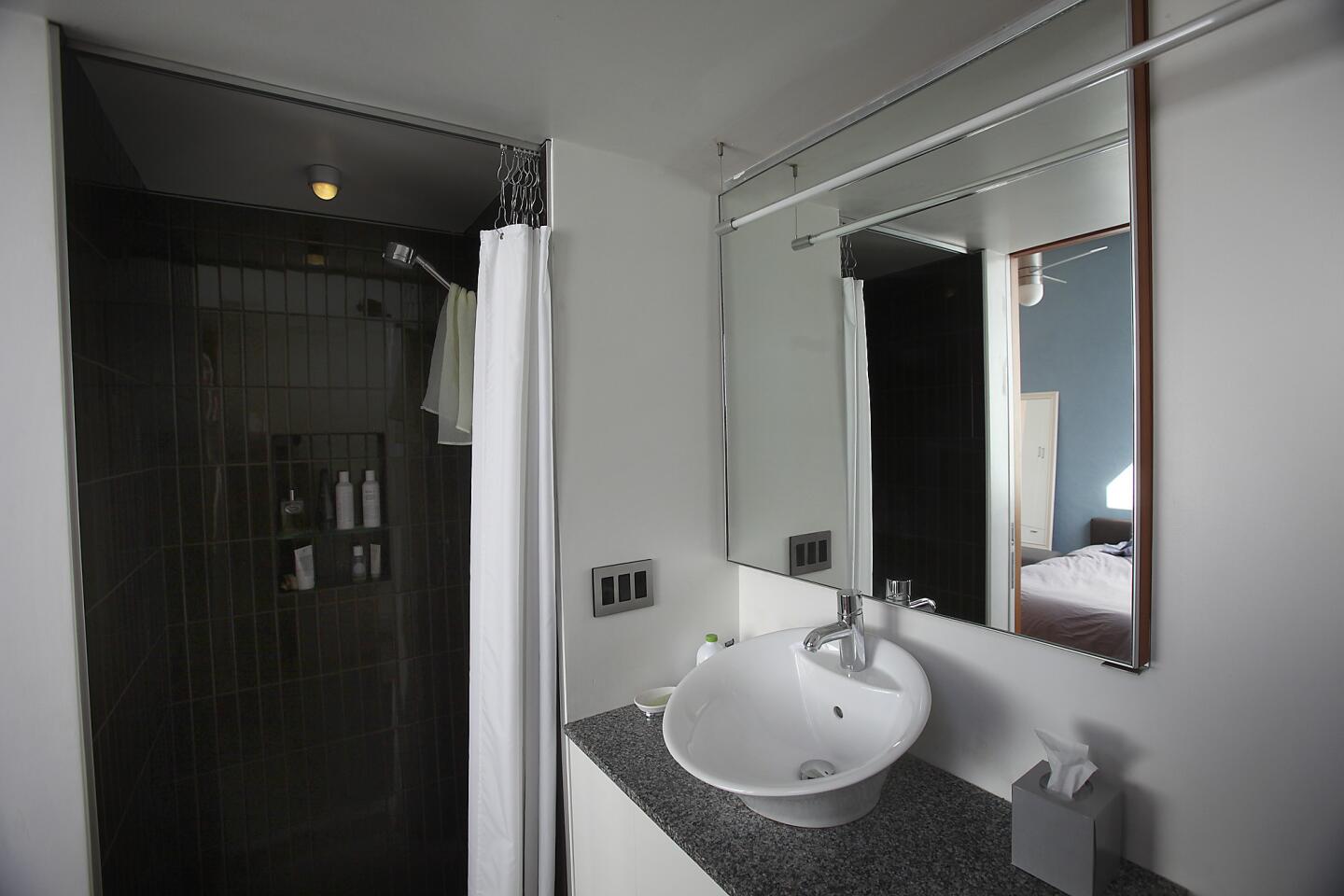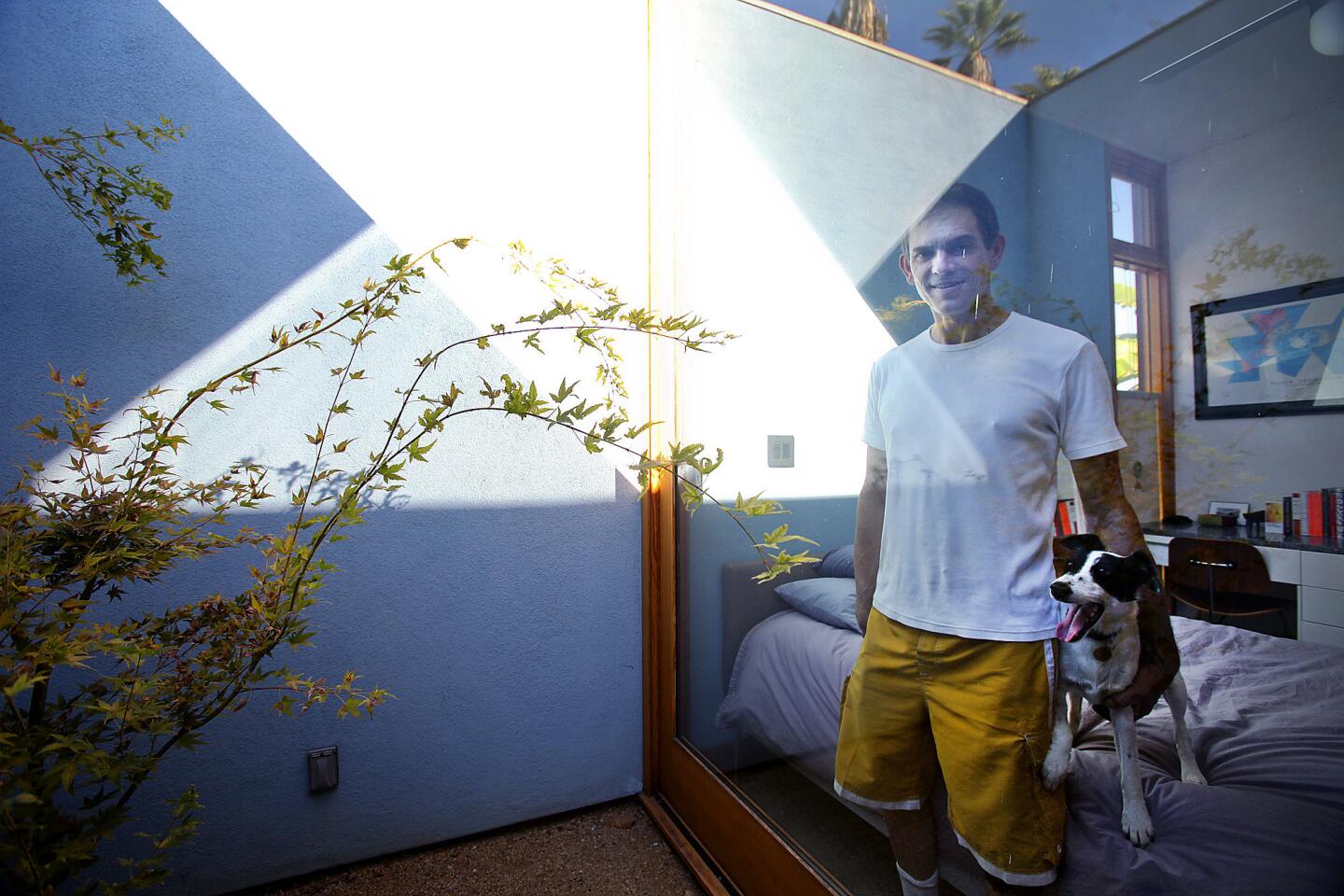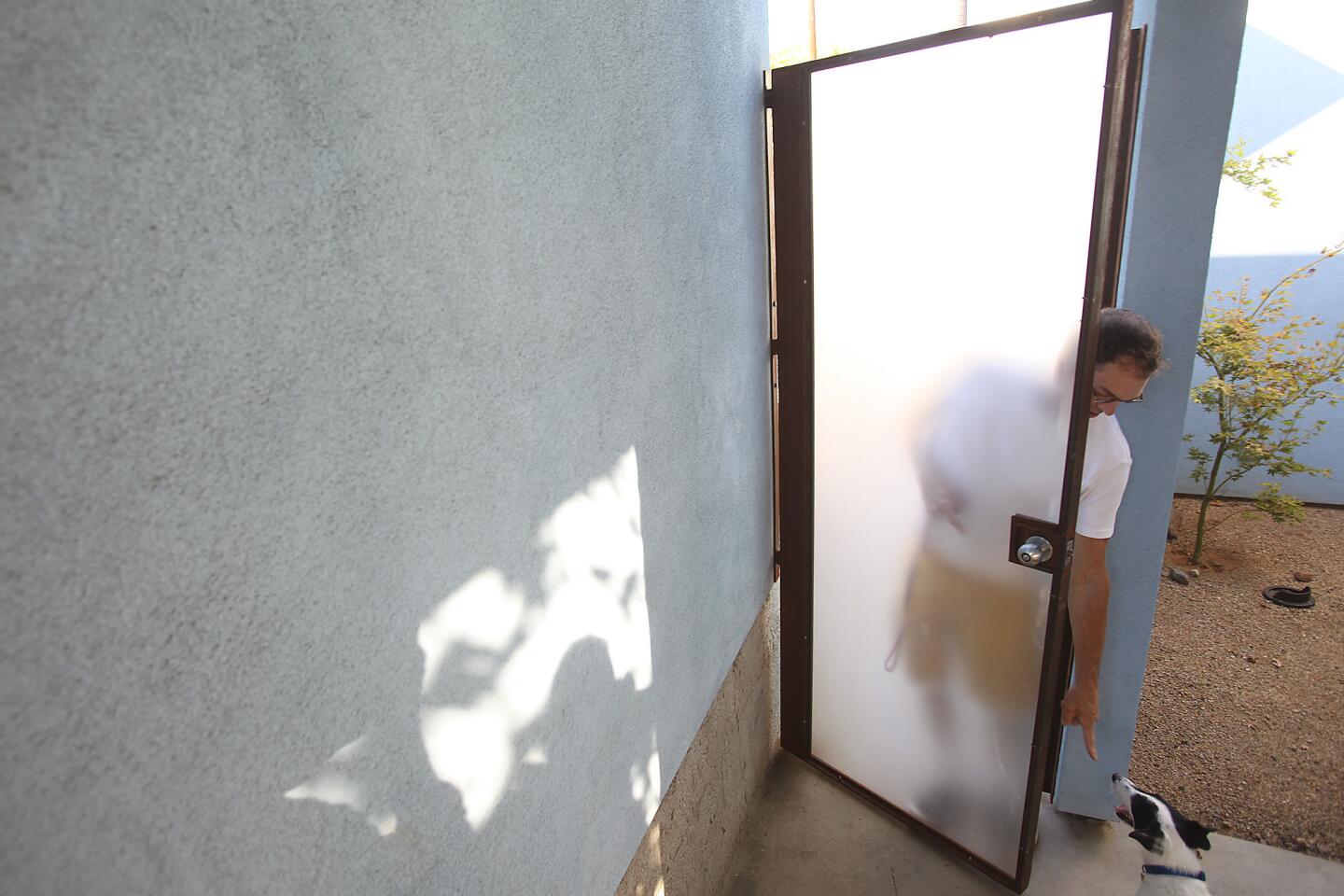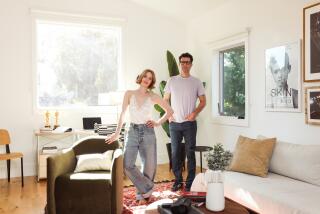From the Archives: 495-square-foot house: a bit of smart, modern living
- Share via
John Oddo once dreamed of having a three-story house with postcard views of downtown Los Angeles. Hamstrung by the recession, he ended up with what designer Louis Molina calls “the smallest new house in Echo Park.” The building is only 495 square feet, but thanks to its creative design, Oddo’s tiny gem feels positively inviting.
Good Idea Design kitchenBroad expanses of glass and high ceilings allow natural light to flood the interiors. Doors and windows are framed in warm wood. Splashes of color add a sense of playfulness. Sleek built-in cabinets and wood paneling conceal appliances and clutter, and every room opens enticingly to a view of the garden.
“The drive was not how to make the most affordable house,” Molina says. “The drive was to make the biggest experience in a small amount of space — enriched living, not impoverished living.”
In 2002, Oddo bought an 1897 Victorian that, after losing its second floor to a fire, had been converted to a one-story duplex. He remodeled the duplex but decided to tear down and replace the shoddy, termite-ridden 1950s rumpus room grafted on in back.
“I was going to build my wonder space — a split design with a stairway in the middle and rooms on both sides staggered every half floor,” Oddo says. “This was at the top of the building boom before everything got too expensive. When I couldn’t get a construction loan, that put the kibosh on the whole thing.”
With their client ready to settle for merely a new garage, Molina and Laurent Turin, partners in Good Idea Studio, convinced Oddo that his money would be better spent on a habitable space with a carport. In other words, they reasoned, why not build a smaller house?“I thought that was brilliant,” Oddo says. “I’d been living in the smaller duplex in the Victorian anyway, which Louis and Laurent had helped renovate. At 535 square feet, it was everything I ever needed. I didn’t need 1,800 square feet.”
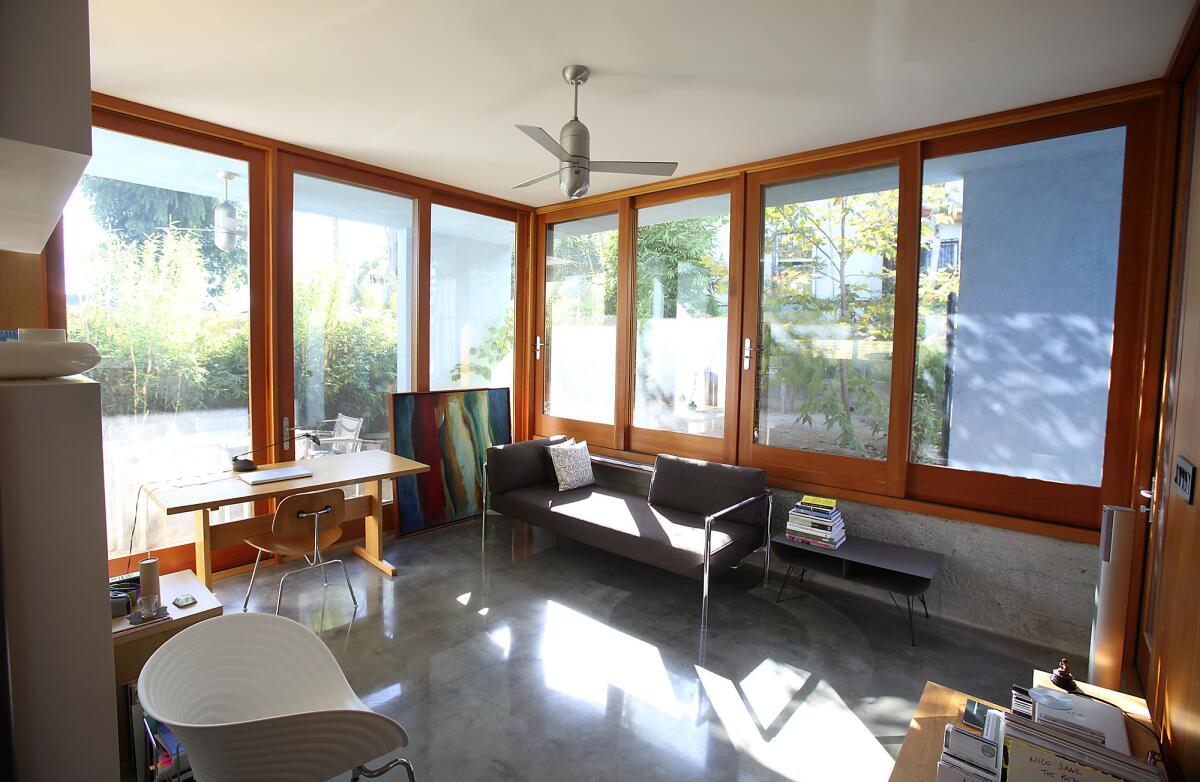
Like others caught in the economic squeeze, he made do with less. But with Molina and Turin’s help, scaling back never meant sacrificing inspired design. For roughly $245 a square foot, Oddo wound up with three rooms — a living-dining-cooking area, a bathroom and a bedroom — plus two shaded patios and a garden of native plants that draw the eye outdoors, all of which make the house appear larger.
The project’s diminutive size is maximized by its thoughtful layout and details. Strategically placed stucco walls provide welcome refuge from the busy street and from neighbors, allowing for a secluded courtyard. The rusted steel exterior trim and house number are set off by climbing vines that will soften and shade the decidedly contemporary facade.
“It was important that the first impression wasn’t small and cheap,” Molina says. “We didn’t want it to look like we had to make compromises.”
Good Idea doorThe lockable steel-framed front gate with half-inch-thick frosted acrylic maintains privacy and security, so that all doors of the house can be left open to capture refreshing breezes. Though the house has air conditioning, deep, sun-blocking roof overhangs are often enough to keep interiors comfortable in summer.
Not everything inside is visible all at once, which furthers the illusion of a bigger home. When you enter through the living-dining area, a partition hides the galley kitchen. A stroll down a short hallway reveals the bedroom at the end. From there, you can turn into the bathroom or step outside and loop back around the house through the garden.
Simple materials were used to save money and provide stylish continuity from room to room. The floor is polished concrete. The Douglas fir trim around the sliding glass doors is complemented by Douglas fir wall panels that keep audio-visual equipment tucked out of sight. The doors and windows from Taylor Brothers Architectural Products in Los Angeles cost about $25,000, a splurge justified by the welcome sense of openness they provide. “We kept cost in mind to know when to spend and when not to,” Molina says.
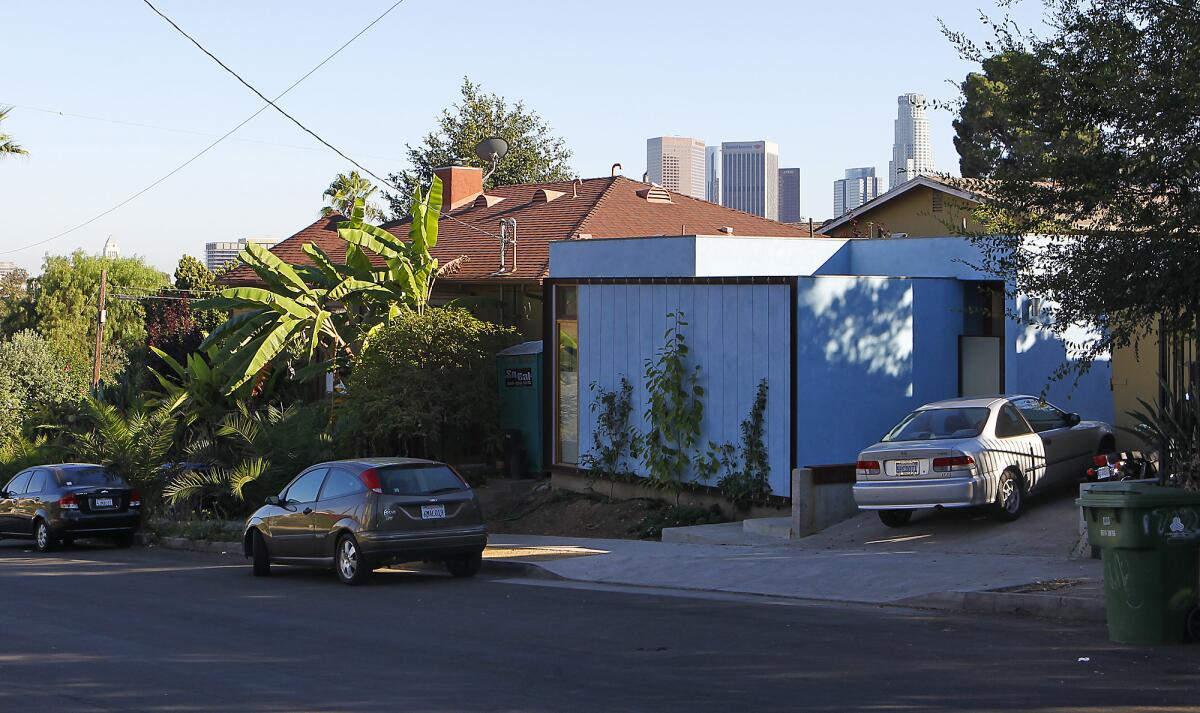
White-painted cabinets made of medium-density fiberboard, or MDF, are an example of where frugality paid off. The cabinets, running 36 feet along one side of the building, provide plenty of kitchen storage, camouflage the washer and dryer, and serve as built-ins for clothes in the bedroom. Molina estimates that custom cabinets would have easily cost $40,000. Using mostly IKEA units kept the price to about $4,000 before installation.
Other budget-conscious moves included “floating” the kitchen partition of white-painted light density fiberboard, or LDF, on square tube steel posts from Industrial Metal Supply of Sun Valley. The partition serves as dish cabinet and buffet counter on one side and projection screen on the other. Elsewhere, recycled pink plexiglass remnants accent bookshelves, and the courtyard’s tranquil blue stucco continues inside the bedroom, cleverly erasing the boundary between outside and in — again, seeming to expand the space.
By the time the house was completed in 2009, the recession forced Oddo to rent out the new space as well as his duplex and move to Orange County to live with his father. He also admits, though, that he would not have been able to fit everything he owned into his compact new home.
So while Oddo downsizes his belongings, Joshua Selsky, a software engineer at UCLA, has enjoyed living in the house. A fan of modernism, Selsky answered Oddo’s ad on Craigslist and, after one walk-through, snapped up the rental for $1,600 a month.
“Yes, it’s expensive,” Selsky says, comparing his little house with much bigger lofts that were going for $1,700 at the time he moved in. “But it has good amenities. What I’d seen in other places all looked very much the same. This place oozes personality. I appreciate that and understand that you don’t get that for free.”
So does this house, where tenants have gladly paid for quality of space over quantity of space, prove that smaller is better? According to Molina, “It proves that small is good. Smaller isn’t better for everyone. But many of us could do with less, for sure.”
The compact kitchen
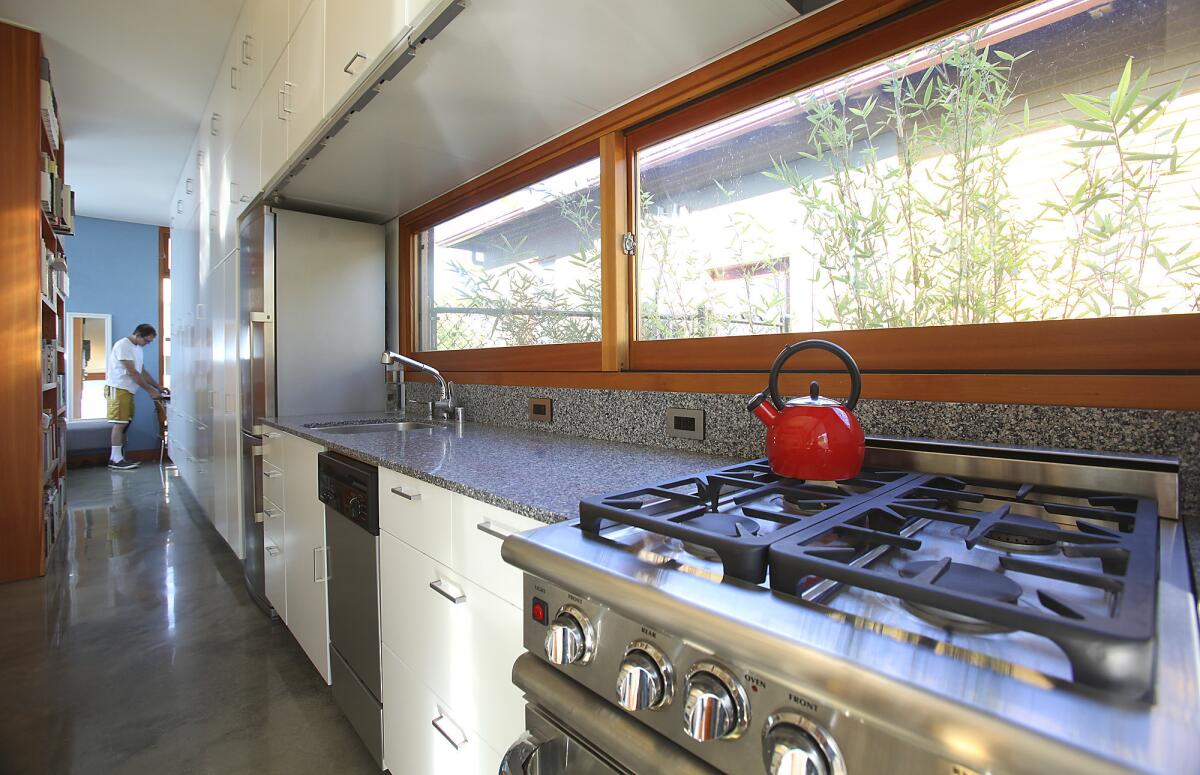
The cabinet wall that runs the length of John Oddo’s house provides abundant storage. To save tens of thousands of dollars, he decided to forgo custom cabinets in favor of pre-made units that were only 2 feet deep. Oddo searched the Internet to find space-efficient appliances that fit:
Summit refrigerator and freezer; www.summitappliance.com.
Capital stove, a discontinued model with an infrared broiler; www.capital-cooking.com.
Fujioh vent, quiet but powerful; www.fujioh.com.
Blanco sink, a stainless-steel model only 18½ inches wide but 9½ inches deep, enough for a stockpot;www.blancoamerica.com.
GE dishwasher, a small machine most commonly used for bars or secondary kitchens;www.geappliances.com.
Whirlpool washer and dryer, stackable units that were discounted because they were slightly scratched and dented; www.us-appliance.com.
More to Read
Sign up for Essential California
The most important California stories and recommendations in your inbox every morning.
You may occasionally receive promotional content from the Los Angeles Times.
